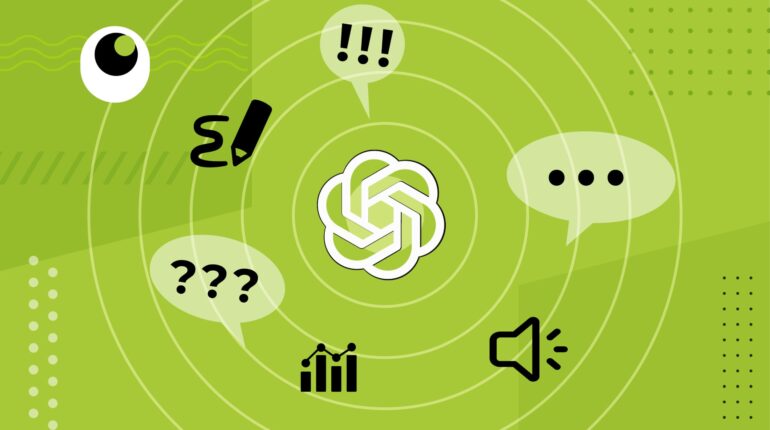TL;DR:
- OpenAI is dedicated to the continual development and enhancement of ChatGPT, its flagship AI assistant.
- A fresh update aims to make the chatbot more user-friendly by presenting suggested prompts to kickstart creativity.
- Additional improvements include follow-up questions and responses, emulating natural human conversation.
- Plus subscribers, for $20/month, now have access to full integration with the advanced GPT-4 model, surpassing the capabilities of the older GPT-3.5.
- Competitors, like Google’s Bard and Anthropic’s Claude AI, are free, challenging OpenAI to add more exclusive features to its paid service.
- New features include support for multiple file uploads, allowing ChatGPT to process a variety of data, and a Code Interpreter beta for analyzing complex codebases.
- Emerging competitors include Bard, Claude AI, and Meta’s open-source LLM, LlaMA-2.
- Third-party extensions are enriching ChatGPT’s functionality, but user engagement has been on the decline.
- Despite room for improvement in accuracy and transparency, ChatGPT remains the leading chatbot in the industry.
Main AI News:
OpenAI remains devoted to the continuous amelioration and fine-tuning of its leading artificial intelligence aide, ChatGPT. The current batch of minor yet consequential enhancements strives to facilitate more fluid and efficient interactions with the chatbot.
OpenAI has unveiled a novel upgrade today, designed to render its digital assistant more user-centric. Confronting a fresh, empty ChatGPT interface can be intimidating, hence now users will find suggestive prompts awaiting them to ignite inspiration and stimulate creative thinking.
The AI assistant further contributes with ensuing inquiries and replies to maintain an organic flow of dialogue. These innovative elements aid in mimicking the to-and-fro cadence of human discourse. This capability has demonstrated its value in the GPT-empowered iteration of Microsoft Bing, therefore it’s logical for OpenAI to incorporate it into its own chatbot. In parallel, these safeguards could potentially deter the bot from producing bizarre responses while concurrently stimulating longer user engagement.
For Plus patrons prepared to invest $20 each month, OpenAI ensures complete integration with the more sophisticated GPT-4 model at the core. Prior to this, sessions would revert to the less proficient GPT-3.5 upon signing out. The antiquated model is faster yet lacks the advancements of the latest version.
It’s of interest that both Google’s Bard and Anthropic’s Claude AI offer usage at no cost, mirroring ChatGPT 3.5. However, OpenAI is pioneering novel utilities upon GPT-4 to augment the allure of its subscription service. These upgrades are exclusive to paying subscribers, relegating GPT 3.5 to just an LLM with zero added features.
Power users are provided another incentive to adopt the new model: the support for multiple file uploads, enabling ChatGPT to derive insights across diverse datasets. In conjunction with the Code Interpreter beta, developers can exploit ChatGPT’s prowess for scrutinizing intricate code repositories.
Despite the swift progression in ChatGPT’s abilities, formidable rivals loom in the form of Bard and Claude AI in the chatbot sphere. Of note, Google has also invested in Anthropic, hinting at potential strategic partnerships. Additionally, Meta recently unveiled its proprietary open-source LLM, named LlaMA-2, which shows considerable promise due to its customizable nature.
External parties have further enriched ChatGPT’s competencies via browser extensions for specialized prompts and functionality surpassing the standard interface. However, engagement has declined since the initial frenzy, rendering these enhancements timely for OpenAI.
ChatGPT, though with scope for advancement particularly in precision and transparency, remains the chatbot to outdo. With OpenAI dedicated to continuous refinements under the hood, this AI aide may one day replicate the feeling of engaging in conversation with a real human, hopefully devoid of poor humor and sporadic hallucinations.
Conclusion:
OpenAI’s continual evolution of ChatGPT signifies a dynamic shift in the chatbot market. Despite the competition from free services like Google’s Bard and Anthropic’s Claude AI, OpenAI’s dedication to providing exclusive, user-friendly, and advanced features for its premium subscribers may encourage other AI developers to follow suit. The ability to integrate with the advanced GPT-4, along with the support for multiple file uploads and the Code Interpreter beta, are lucrative offerings for power users. However, the recent decline in user engagement and the emergence of new competitors, including Meta’s LlaMA-2, present challenges that OpenAI must address to maintain its market leadership. Overall, the landscape of the AI chatbot market is likely to become more competitive, prompting companies to continuously innovate to provide users with superior, value-added services.

